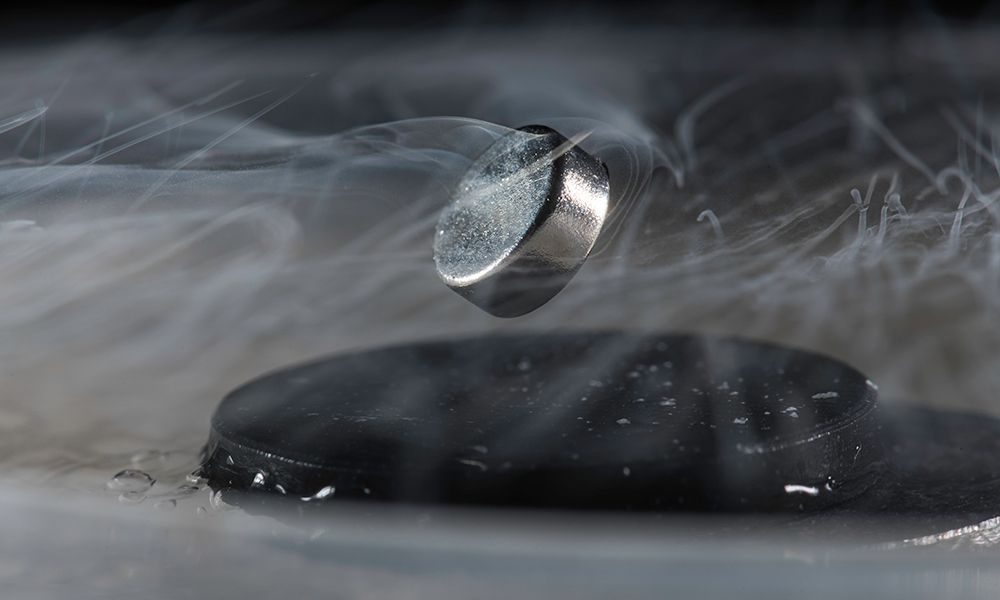
💡 Now we finally have a superconducting material that works at room temperature
A new material conducts electricity without any resistance, which opens the door to super-efficient electricity networks, faster electronics, floating cars and much more.
Share this story!
Researchers at the University of Rochester in the United States have made a potentially revolutionary discovery. They have succeeded in creating a material that is superconducting at room temperature .
Superconductivity at room temperature has been one of the holy grails for researchers since the effect was discovered in 1911. So far, superconductivity has only worked in extremely low temperatures (about -140 ° C) and lower), but now we have a material that is superconducting at room temperature.
Researchers at the University of Rochester have created a material, consisting of hydrogen, carbon and nitrogen, which is superconducting at 15 ° C.
To make the combination superconducting, the researchers compressed the materials with a diamond cleaning cell that can produce a pressure equal to the pressure in the earth's core. More precisely, a pressure corresponding to 2.6 million times the atmospheric pressure at sea level was required.
It is a process that cannot be used to mass-produce materials, so it will probably take a while before we can see the first applications in our everyday lives. But researchers are now looking for methods to be able to mass-produce the superconducting material.
If and when researchers can find a method for commercial mass production, it can have major effects around the world. The researchers themselves point out that superconductivity can be used for:
· Electricity network that transmits electricity without any energy losses. In today's electricity grid, 200 MWh worth $ 20 billion disappears every year in the United States alone.
· New methods of driving hovercraft and other vehicles which then do not have to lose any force to friction.
· Faster electronics such as computers and mobile phones.
There is still a lot to do before we can mass-produce superconducting materials. But just the fact that a research team has succeeded is likely to make many other researchers now put in a higher gear. So hopefully we will see many positive news in this area in the near future.
By becoming a premium supporter, you help in the creation and sharing of fact-based optimistic news all over the world.


